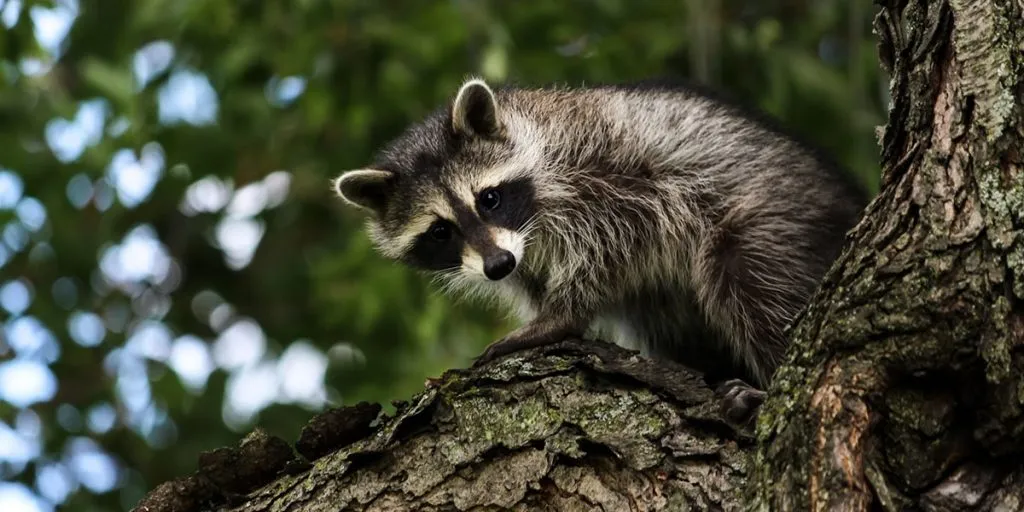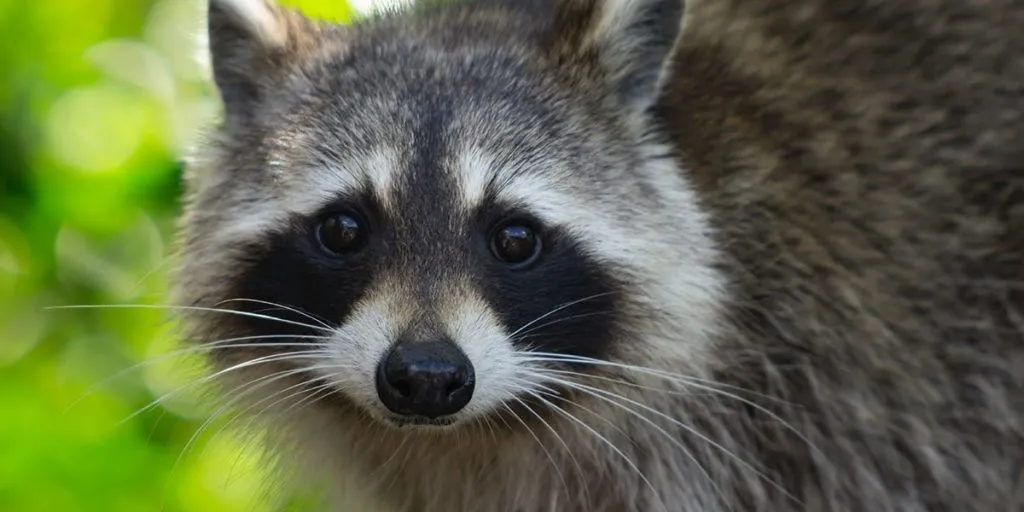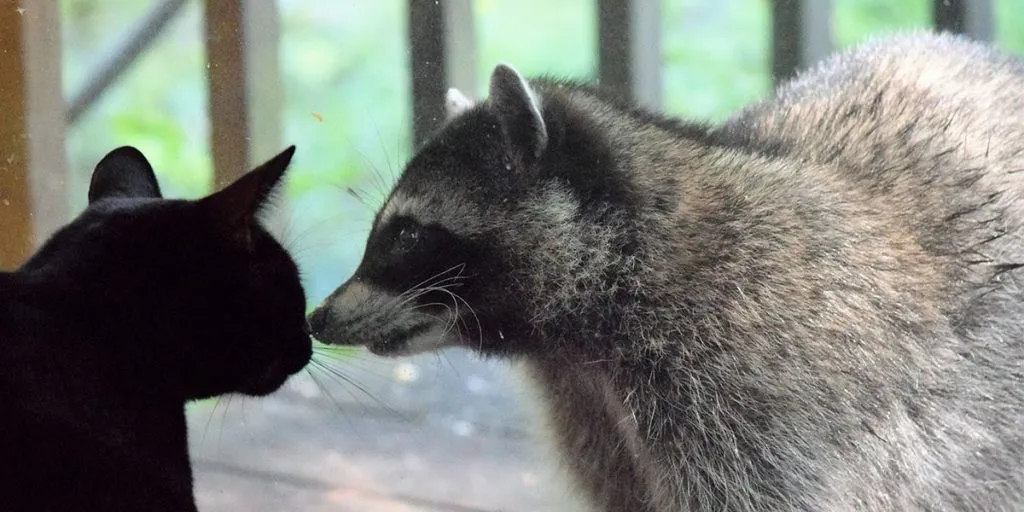If you’ve ever seen a raccoon climb down a tree, you’ve probably wondered how it ended up there. The behavior is perfectly natural. Trash pandas are opportunistic animals that tend to prefer the safety of a tree over spending time on the ground.
Raccoons are excellent tree climbers. For a raccoon, climbing up and down a tree is part of their natural behavior. Trees provide safety from predators and access to additional food sources.
A raccoon in a tree will climb down a tree bottom-first, but will not be able to do so when injured. In urban settings, they will climb on fences, houses, or other structures to access trees. It is not uncommon for a raccoon to use a tree to access the roof of a house, or the inside of an attic.
The video below will show normal raccoon climbing behavior in a tree. The video will show you how they are able to climb a big tree without much effort (all credits go to Anil Kumar on YouTube for capturing this amazing footage):
Why Is There A Raccoon In My Tree?
In both urban and natural environments, the main reason why raccoons use trees is to rest, or to scout for possible predators. A raccoon will climb up and down a tree with its sharp claws and can potentially damage the bark in the process.
While the animals are relatively harmless to humans, they can be dangerous for your pets. At night, a raccoon will come down from a tree to scavenge for food. They are known to get into garbage cans, chicken coops, vegetable gardens, or ponds. They will attempt to climb into attics, chimneys, or borrow themselves under a deck or house.
Most people see these animals as pests because of this behavior. It can therefore make sense to discourage them from entering your backyard and climbing your trees.
How To Stop Raccoons From Climbing Trees
The first step to help stop raccoons from climbing trees, is to set up a deterrent. Only when that doesn’t work and raccoons keep wreaking havoc on your property, you can consider talking to a professional pest control company.
Here are some basic tips to discourage raccoons from using your trees:
- Fence off your trees: Use porcupine wire around the tree trunks. Make sure humans or pets do not harm themselves on the spiky wires by marking the perimeter of the trunk.
- Block off tree hollows: Raccoons love to sleep and nest in tree hollows. Discourage nesting by blocking off any hollows with wood or other dense materials raccoons can’t chew through.
- Do some serious tree trimming: Observe where the animals usually tend to hang around. Focus on how they manage to access your trees. Cut down any large branches that raccoons use to jump around.
- Remove food sources: Lock your garbage cans, cover your ponds or vegetable gardens, and block off access to vents and shafts on the outside of your house. If there’s no food, there’s no raccoon to worry about.
Despite your best efforts, it might be difficult to completely get rid of raccoons on your property. If all else fails, contact your local pest control company specializing in raccoon removal. They can give you professional advice on how to discourage raccoons from climbing your trees.
If you have multiple trees on your property that are near your house, it might make sense to reduce the number of trees. Raccoons are not afraid to jump onto your house to explore. They will also jump between the trees without much effort.
Can Raccoons Jump From Tree To Tree?
Raccoons are really good at jumping from one tree to another. They can jump from tree to tree for distances of up to three to four feet (90 to 120 cm). Their claw-like toes allow them to hold onto branches after jumping from one to the next.
That being said, the animals will only make such acrobatic moves when they absolutely need to. They could be motivated by food or curiosity to explore. But the most important reason for a raccoon to jump from one tree to another is escaping from a predator (including humans).
Luckily, a raccoon will not fall from a tree very quickly. They even deliberately drop down from trees to get to another one, further expanding their original jump distance of four feet to ten feet or more (roughly 300 cm or more).
When Do Baby Raccoons Start Climbing?
From as young as 2 months, baby raccoons start jumping and climbing on trees, fences, poles, rooftops, and in gutters. Baby raccoons start climbing after leaving their nest, and it is the adult mother that will teach a baby raccoon how to climb.
If you happen to find a litter of babies that just left the nest, you can see the mom teaching her little ones how climbing is done! She will give the babies a little nudge with her nose, to encourage them to go up a tree.
It is extremely important for the survival of a baby raccoon to learn how to climb. That’s why they begin doing it at such a young age. Climbing trees is needed to hide from danger, but it’s also where the critters will sleep during the day.
Do Raccoons Sleep In Trees?
Raccoons are nocturnal animals, so they are active at night and sleep during the day. Raccoons prefer to sleep in tree hollows or openings in fallen logs, but they are generally opportunistic about their sleep location.
If no tree hollows are available, a raccoon will burrow itself under a deck or house. They are also known to or climb in an attic or chimney for protection. Barns, sheds, trucks, or cars are also commonly used to sleep in. At night, they will come out of their hiding spots and forage for food.
A tree hollow is the preferred sleeping location for a raccoon, because it is sufficiently protected from both predators and the elements. A raccoon will definitely live up in a tree if it sees an opportunity. Because human activity has made these hollows increasingly more scarce, they adapted and started using human-created hiding places to sleep in.



